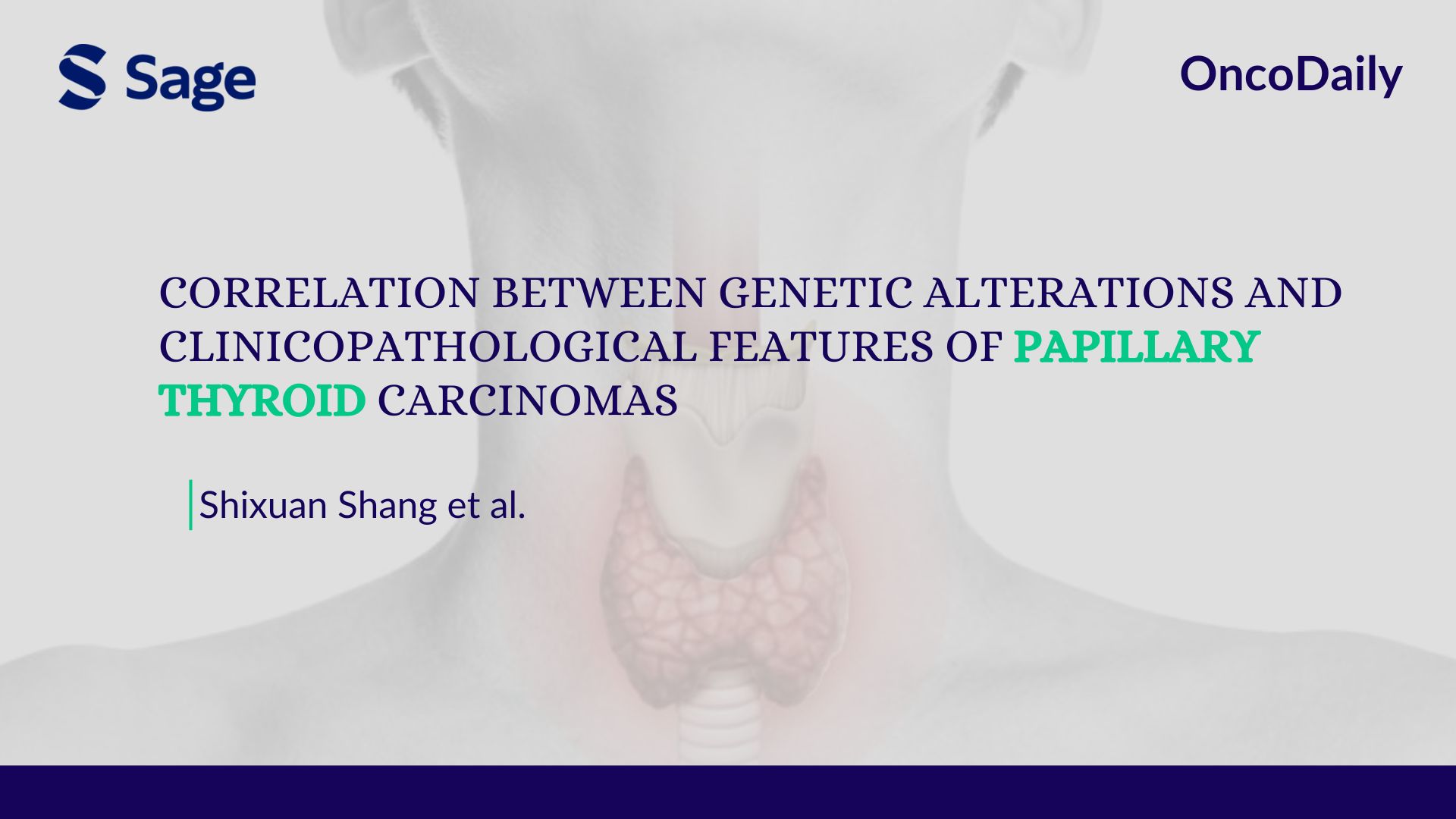Authors: Shixuan Shang, Huimin Yang, Meixiang Chen, Jin Wu, Xianjun Shi, Xiangqin Li, Ningning Feng, Zhaoqing Zheng, Hongmei Liu, and Yunzhi Zhang.
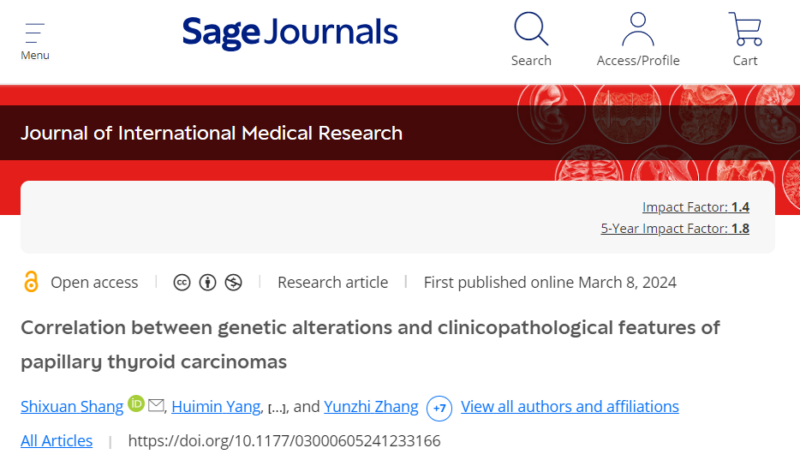
Published in Journal of International Medical Research, Sage Journals in March 2024
Introduction
Papillary thyroid carcinoma (PTC) accounts for 80% of thyroid cancer cases, with a generally good prognosis but a 30% risk of relapse. Genetic mutations, such as BRAFV600E and RET rearrangements, are frequently found in PTC and may influence prognosis. This study aimed to explore the relationship between genetic mutations and clinicopathological features in PTC.
Design and Methods
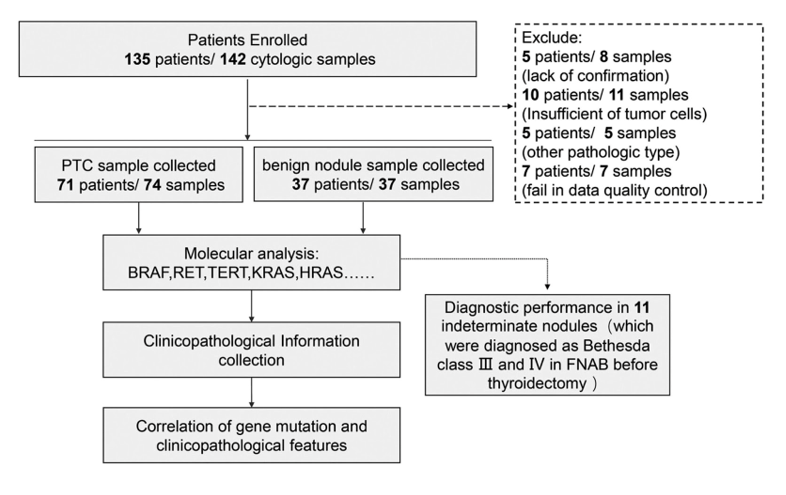
This retrospective study analyzed 111 thyroid nodule samples, including 74 PTC and 37 benign samples. A 22-gene mutation assay using next-generation sequencing (NGS) was employed. The clinicopathological data of patients were collected and analyzed to identify correlations between gene alterations and features like lymph node metastasis (LNM), capsular invasion and tumor subtype.
Results
• Mutation Rates: 79.7% of PTC samples exhibited at least one mutation, with BRAFV600E being the most frequent (62.2%). RET and RAS mutations were also identified.
• Clinicopathological Correlations: Genetic mutations were significantly associated with higher rates of LNM and capsular invasion, younger age (<45 years), and classical PTC subtype. BRAFV600E was linked to a lower occurrence of Hashimoto’s thyroiditis (HT) and higher rates of capsular invasion.
• Age and LNM: In patients aged ≥45, the BRAF mutation was significantly associated with LNM, suggesting its prognostic value in older patients. Younger age was identified as an independent risk factor for LNM.
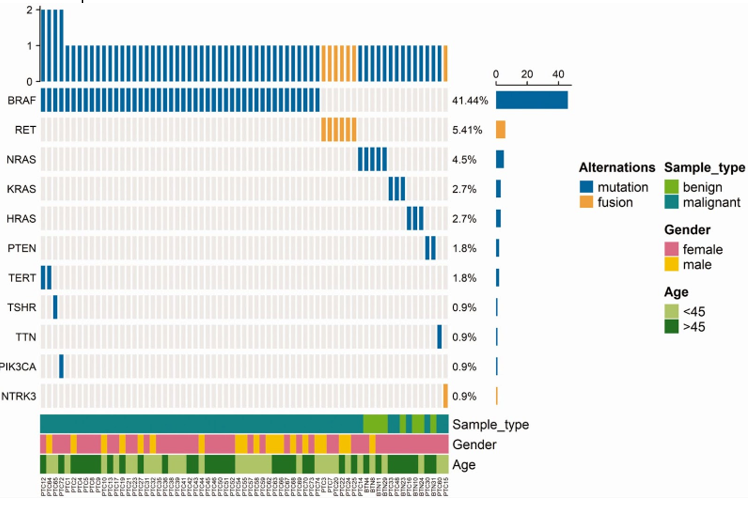
Figure above shows the mutation profiles for the PTC and benign groups. The waterfall diagram highlights only the cases with detected gene mutations. PTC refers to papillary thyroid carcinoma, and BTN refers to benign thyroid nodules.
What We Learned
•Efficacy: Genetic mutations, particularly BRAFV600E, correlated with more aggressive disease characteristics such as LNM and capsular invasion. BRAF mutations were notably more prevalent in patients with classical PTC.
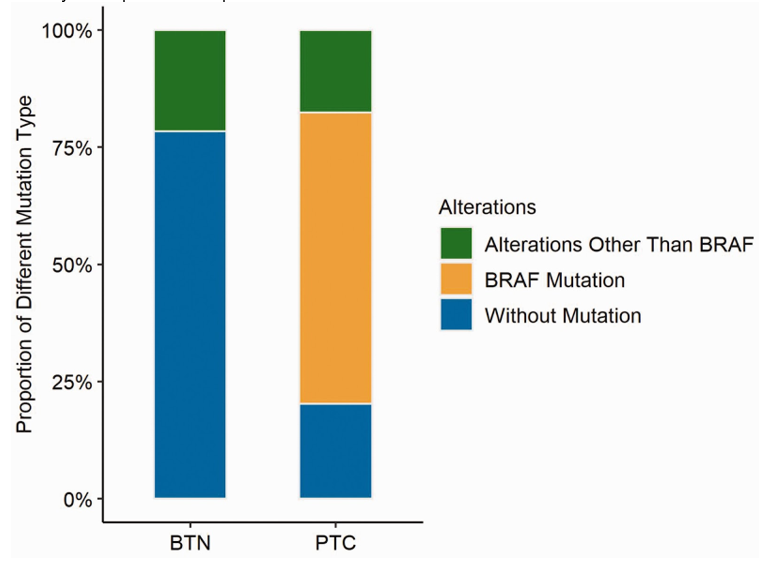
Figure above presents the percentage distribution of various gene alteration types in the PTC and benign groups. PTC refers to papillary thyroid carcinoma, and BTN to benign thyroid nodules.
• Age Factor: The association of BRAF mutations with LNM in older patients highlights its potential use in prognosis for this age group.
Key Highlights
• BRAFV600E is highly prevalent in PTC and correlates with aggressive tumor features like LNM and capsular invasion.
• Younger patients with PTC may present a higher risk of LNM, even though older age is traditionally considered a poor prognostic factor.
Key Takeaway Messages
• The study supports the use of genetic testing, particularly for identifying BRAFV600E, in assessing the prognosis of PTC, especially in older patients.
• Gene mutations may help guide more aggressive treatment strategies for patients with specific genetic profiles.
Limitations and Future Directions
• The sample size was limited, and some benign nodules were diagnosed only by fine-needle aspiration biopsy (FNAB), lacking histopathological confirmation.
• Future research should include larger, multi-center studies to further validate the findings and assess the long-term prognosis associated with genetic mutations.
Conclusion
This study highlights the significant correlation between genetic mutations, particularly BRAFV600E, and clinicopathological features in PTC, contributing to improved understanding and management of PTC through targeted genetic testing.
